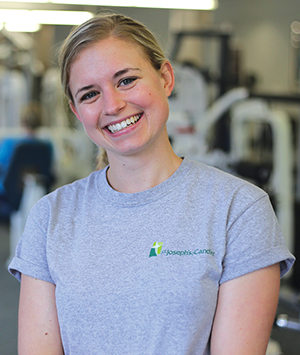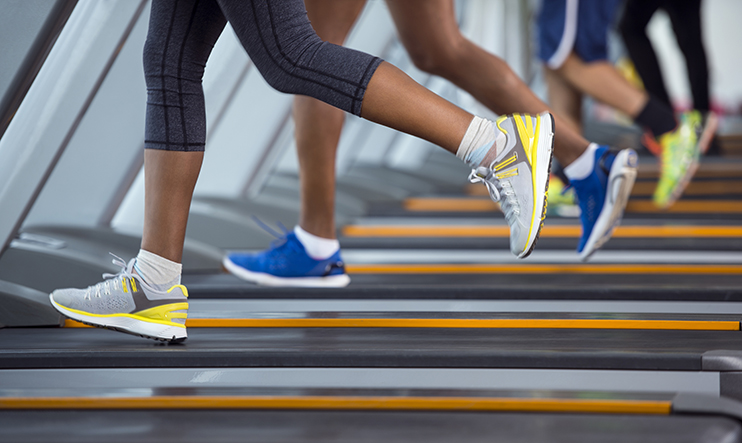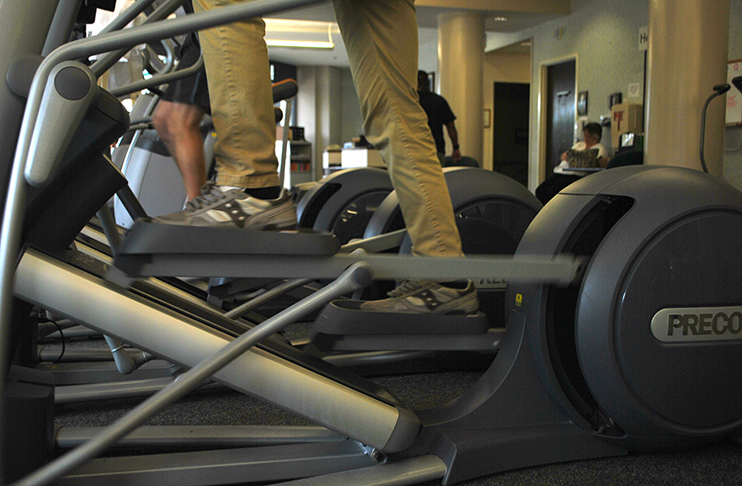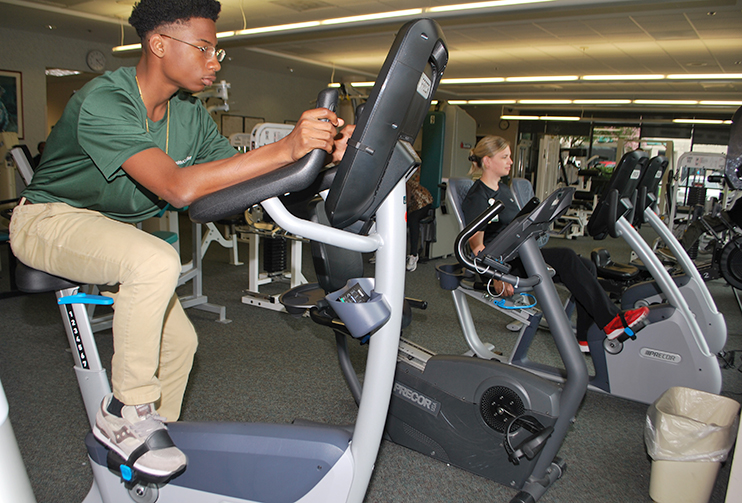Need help deciding which cardio workout is right for you?
Fitness
St. Joseph’s/Candler Wellness Center coordinator breaks down equipment, exercises to get the most out of your cardio routine
Do you find yourself making excuses for not exercising? Well it’s time to stop, and we’re here to help.

Cardiovascular exercising is one of the best things you can do to improve your overall health and self-esteem. Cardio exercises strengthen your heart and lungs, help lower cholesterol, reduce your risk of type 2 diabetes, improve your immune function and help lower blood pressure. In addition, cardio exercises can help you sleep better and shed excess weight (along with proper diet), which will help you look and feel better.
Brittany Hartl, wellness coordinator and exercise physiologist with St. Joseph’s/Candler, recommends at least 30 minutes of cardio three to five times a week. The key to an effective cardio workout is increasing your heart rate to at least 50 percent to 85 percent of your max heart rate and maintaining it for a period of time.
“Cardio works the aerobic system so it’s important to make sure that you increase your heart rate,” Hartl says. “It challenges your body in a different way than strength training does. If you get your heart rate even to 50 or 60 percent of your max rate – or more is even better – then you are effectively getting in a cardio workout.”
There’s an easy formula to determine your max heart rate, Hartl says. Take 220 minus your age and multiply that by .65 and then by .85. That gives you a range to keep your heart rate between 65 and 85 percent when doing cardio exercises.
So now that you know your target heart rate, it’s time to get started.
Cardio exercises include any aerobic activity that increases your heart rate. At the St. Joseph’s/Candler Wellness Center we have the treadmill, elliptical, stationary and recumbent bikes, rower and stair climber. You also can get in a cardio workout through an aerobics class, such as circuit or HIIT (high intensity interval training), and even at home.
Hartl explains the pros and cons of different equipment to help you pick the best one for you, and suggests some exercises you can do outside of the gym.

Treadmill
The treadmill is great for walking, running or those seeking an incline. It’s comparable to outdoor walking and running, which makes it a great piece of equipment for rainy or extremely hot days. On the flip side, the treadmill can be hard on the knees and hips due to the impact of walking or running on a moving belt.

Elliptical
The elliptical is a gliding aerobic machine that simulates stair climbing, walking or running. It works the hip and lower leg muscles, as well as the arms. The elliptical is considered a low-impact machine because it decreases the risk of impact injuries to the knees and hips. However, some may have trouble with the bouncy motion you get while using the elliptical. It also may not be suited for people with balance issues. New users may want to work up to the elliptical machine.

Stationary/recumbent bike
The stationary (or upright) bike has the pedals positioned under the body, just like the bike you grew up with. On a recumbent bike, the pedals are positioned in front of the body and a larger, reclined seat allows you to sit slightly back. The recumbent provides less pressure on the knees versus the upright bike and is easier to get on and off of. Someone with a balance issue may not want to use the stationary bike. Both bikes, however, can be great places to start for beginners with non-balance problems. The downside to these machines is the range of motion to the knee, and for cardio purposes, it’s harder to increase your heart rate on the recumbent bike.

Rowing machine
One of the more underutilized pieces of equipment in most gyms is the rowing machine. The rower stimulates the action one would take during watercraft rowing. It is a complete body workout. The rower works the legs by pushing off, or back, and the upper body to pull the handle to your midsection. The rower gets your heart rate up quickly and maintains it during the workout. “When you use your arms, because of the proximity to your heart, it gets your heart rate higher,” Hartl adds. The rower is a great cardio workout to add to strength training or even running. At a lower resistance, it’s also a great place for beginners to start. The con to using the rowing machine is that it can be tough on your shoulders and back.

Stair climber
Stair climbing machines can vary in appearance. Some have two platforms for your feet and produce an up and down motion, while others look like a set of stairs or a ladder and literally simulate climbing stairs. Any stair climber provides a good lower body workout. Depending on the machine and your speed, it can be difficult to get your heart rate up.
Other cardio examples
Cardio machines are great for an aerobic workout and almost all machines are able to track your heart rate. However, you can easily get in a cardio workout if you can’t or don’t want to join a wellness center or gym. Hartl recommends high intensity interval training (HIIT) which can include jumping jacks, running in place, pushups and squats. Rotate through a series of those exercises for 20 minutes straight for needed cardio.
Hartl reminds everyone the important part of a successful cardio workout is achieving your target heart rate and maintaining it throughout your workout. If you would like help getting started or with your current workout plan, the St. Joseph’s/Candler Wellness Center has exercise physiologists available for personal training, as well as the equipment listed above and several workout classes. For more information, call the Wellness Center at 912-819-8800.